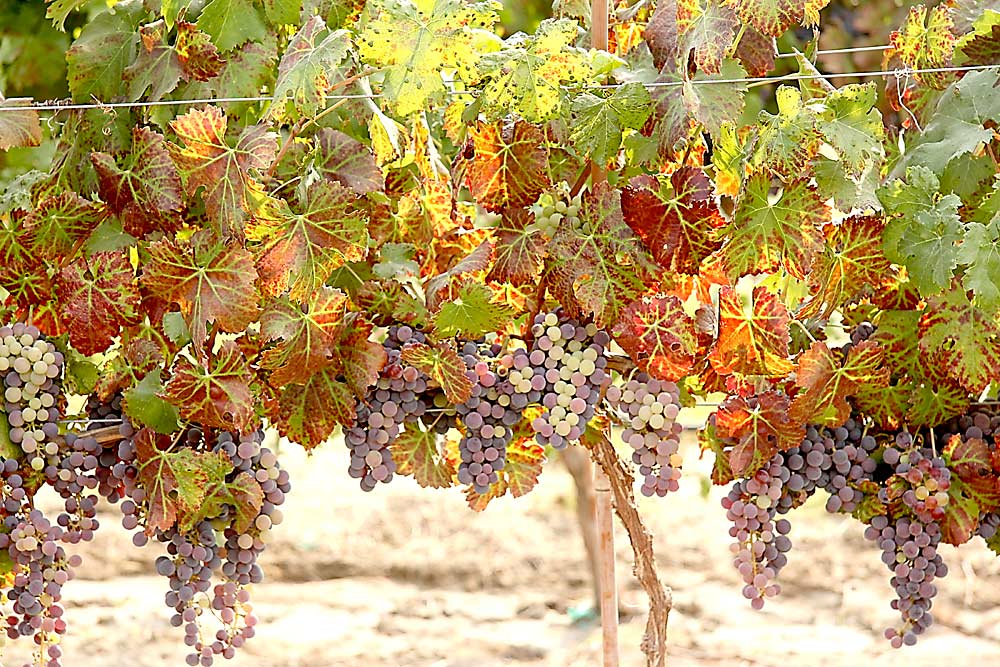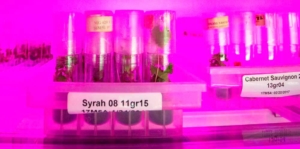
Following years of discussion, Washington state plans to update its rules governing the movement of grape planting stock to protect the wine and juice industries from pests and diseases.
The changes to the grape pest quarantine program resulted from five years of industry-led work to standardize grapevine nursery stock certification and quarantine requirements across the Pacific Northwest states, funded by a U.S. Department of Agriculture grant and organized by the Washington Wine Industry Foundation. California eventually joined in as well.
The proposed rule changes will align Washington’s rules with those in Oregon, Idaho and California to make it easier for nurseries to do business across state lines. But it also clarifies that the quarantine regulations apply to infected grape plantings within the state as well, to reduce the risk of pest spread.
The rules do not regulate the movement of fruit.
As a relatively young wine industry, Washington enjoys lower pest and disease pressures than California or Europe. That’s an advantage the state needs to protect, said virologist Naidu Rayapati, who serves as the director of Washington State University’s Irrigated Agriculture Research and Extension Center.
“Having efficient quarantine and certification rules and regulations is the first step in that direction,” he said. “We are really making excellent progress.”
Initially, the program update process focused on grapevine viruses, but the discovery in 2019 that phylloxera was more widespread in Washington than previously thought raised the priority for managing it through the quarantine program as well, said Cindy Cooper of the Washington State Department of Agriculture.
“It fit into the conversation that was already happening,” she said. “The biggest change here was really driven a bit by phylloxera, and that is that if we find a quarantine pest at a grape site within the state, that site will have to take a pest management plan action before they can move grape planting stock or shared equipment.”
Quarantine programs traditionally aim to keep pests out of the state, but it’s equally important to keep quarantine pests that are present from spreading further, Cooper said.
That includes phylloxera and grapevine leafroll-associated viruses, along with grapevine red blotch virus, which will be included in the quarantine list under the proposed rule changes. Rayapati estimates that taking these protective actions could eliminate the red blotch virus from the state over the next several years.
“Based on our research, we are not seeing any spread of red blotch. There is no vector that can spread it (here), unlike leafroll, so if we are able to prevent the dissemination of this virus in planting material, we should be able to eliminate the problem from Washington state,” he said. “That’s the kind of vision I am promoting.”
The changes also include adding three pests not currently found in Washington: the glassy winged sharpshooter, the European grapevine moth and Xiphinema index, the dagger nematode that vectors grapevine fanleaf virus. Those remaining on the list include the fanleaf virus, leafroll-associated viruses, phylloxera and vine mealybug.
Cooper said the WSDA is working with WSU and industry associations to support adoption of simple quarantine pest management plans. An action plan can vary, depending on the situation: For example, a vineyard with phylloxera present could hose off equipment before transporting it to another site, while a nursery taking cuttings for propagation could test for viruses or use a hot water treatment on vine roots to control for insect pests.
“State regulations don’t prevent a grower from taking cuttings from a neighbor, but we would like to take this opportunity to tell growers that we have diagnostic services that can help you make sure you are not using infected material for your plantings,” Rayapati said.
The other main proposed rule change would require Washington growers to obtain a phytosanitary certification when importing grapevine material from Oregon or California suppliers, to show it meets Washington’s virus-testing requirements.
Within the state of Washington, vines propagated for on-farm use or for sale need to be free of quarantine pests, but they don’t need to be certified.
“Everyone will see the benefit of complying with this quarantine,” Cooper said. “It’s the vehicle by which we protect our wine and juice industries.”
The Washington Winegrowers Association petitioned for the proposed amendments at the culmination of the multistate strategy process. Vicky Scharlau, executive director of the association, said the process brought all the industry and regulatory parties together to find workable solutions.
“It’s well worth the process and I think people will be pleased with the outcome,” she said.
The updated regulations give the WSDA more authority to help the wine industry deal with the threat of quarantine pests and diseases spreading within the state, she said.
“I believe the industry was operating under the assumption that the WSDA already had that ability, and we were surprised that they didn’t,” Scharlau said. “We do want to be able to have the regulatory agency that can put its foot down when the industry finds something ranging from problematic to catastrophic. It allows the industry a really powerful ultimate step to protect its economic interests.”
Washington is the first state from the working group to finalize rule updates, Scharlau said. Oregon is also in a rule-making process, she said, but in Idaho, state lawmakers will have to pick up the proposed pest protection changes.
—by Kate Prengaman







Leave A Comment